Rome Attractions
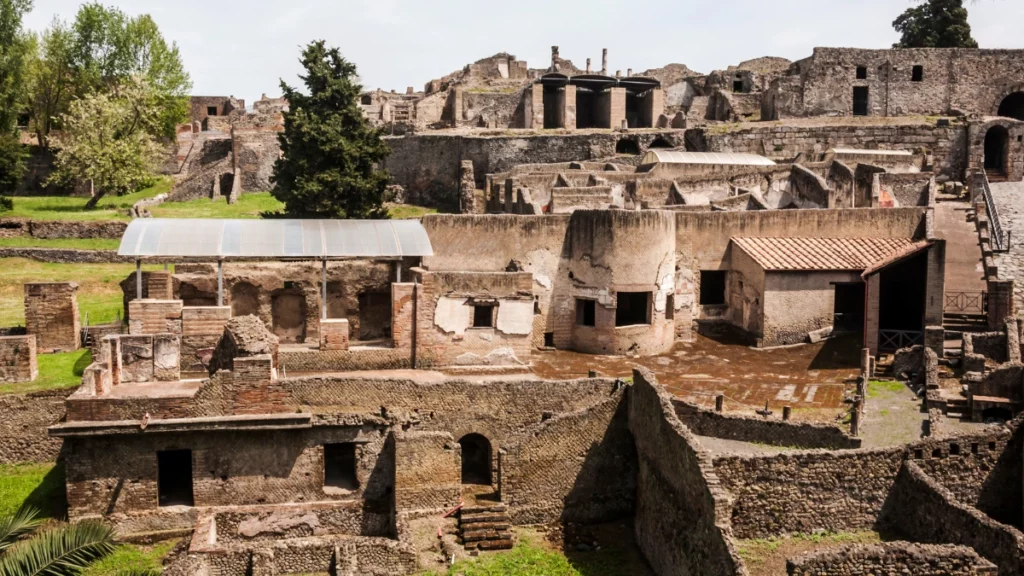
Pompeii is an ancient Roman city near the Bay of Naples in Italy. Once a lively and wealthy place, it was a popular spot for rich Romans as far back as the 8th century BC. The city had grand houses, busy markets, and a thriving social life.
But in 79 AD, everything changed. Mount Vesuvius erupted, covering Pompeii in thick layers of ash and rock. In just 24 hours, the city was completely buried, frozen in time under volcanic debris. Buildings, streets, and even people were preserved just as they were in their final moments.
For over 1,500 years, Pompeii remained hidden until it was rediscovered in the 1700s. Today, it’s one of the most famous archaeological sites in the world, giving us a rare and detailed look into life in ancient Rome. Tourists from all over the world now visit to walk its ancient streets, just like the Romans once did.
Pompeii facts
What makes Pompeii doubly alluring is the number of mysterious or quirky facts hidden in its history and its ruins.
Knowing about the attraction beforehand will help you admire its beauty a shade deeper.
Here are some interesting facts that are bound to tickle the travel bug in you.
1. Pompeii was once a thriving city
Pompeii was once a bustling city with around 20,000 residents, filled with markets, grand villas, and lively streets. But in August 79 AD, disaster struck.
Mount Vesuvius, just 10 km (6.2 miles) away, erupted with immense force, covering the city in up to 16 feet of volcanic ash. A deadly mix of pumice, ash, and scorching lava rushed down the mountain, destroying almost everything in its path.
Most people managed to escape, but around 2,000 unfortunate souls perished, trapped by the sudden and overwhelming disaster. Pompeii remained buried and forgotten for over 1,500 years until archaeologists uncovered its remarkably preserved ruins, giving us a glimpse into life in ancient Rome.
Recommended
2. A 2000+ years old letter details the volcanic eruption
The first real evidence of Pompeii’s destruction comes from an ancient letter written by Pliny the Younger. He witnessed the eruption of Mount Vesuvius from a distance and later described it in detail to a friend.
In his letter, he also recounted how his uncle, Pliny the Elder, lost his life in the disaster while trying to rescue people trapped near the shore. His vivid description of the eruption gives us a rare firsthand account of the event, making it one of the most valuable historical records.
Pliny the Younger compared the massive volcanic cloud to a Mediterranean pine tree, writing:
“It resembled a (Mediterranean) pine more than any other tree. Like a very high tree, the cloud went high and expanded in different branches….sometimes white, sometimes dark and stained by the sustained sand and ashes.”
His words paint a haunting picture of the chaos and destruction that buried Pompeii forever. Read Pliny’s first-hand account.
3. Vesuvius’ eruption has given us many geological terms
Since this devastating eruption, geologists have classified this type of violent and explosive volcanic eruption as a Plinian eruption, named after Pliny the Younger, who documented the event.
Although Mount Vesuvius has erupted over 50 times in the past 2,000 years, the 79 AD eruption was so massive that it changed the way we understand volcanoes today. Interestingly, before this disaster, the Romans didn’t even have a word for “volcano”. The term was later derived from Vulcan, the Roman god of fire and metalworking, whose forges were believed to cause eruptions.
Recommended
4. Pompeii was a summer tourist spot
Pompeii was a remarkably advanced and bustling city for its time. It wasn’t just a place where people lived—it was a thriving summer retreat that attracted visitors daily. Wealthy Romans built lavish mansions and villas, while locals enjoyed a vibrant social and commercial life.
The city had everything you’d expect in a modern town—factories, marketplaces, open-bath houses, and even a port that connected it to trade routes. Entertainment was a huge part of Pompeii’s culture, with a 20,000-seat arena, an amphitheater for gladiator fights, brothels, and gymnasiums for physical training.
Pompeii thrived in harmony and prosperity, a city full of life and ambition—until the fateful day when Mount Vesuvius changed everything forever.
5. Pompeii had more than 25 brothels
Archaeologists have identified around 25 brothels scattered throughout Pompeii, revealing a side of Roman life that was both openly practiced and socially accepted. The most famous among them is Lupanar, a two-story brothel with five small rooms on each floor. Its name comes from the Latin word Lupa (meaning “she-wolf”), which was a slang term for prostitutes.
Inside, the walls are adorned with explicit frescoes, likely serving as a “menu” of services for clients. The women who worked there were mostly slaves, and their payment was shockingly low—about the cost of a few glasses of wine.
Today, Lupanar is one of Pompeii’s most visited attractions, drawing curious visitors eager to glimpse this preserved aspect of ancient Roman society.
Recommended
6. Roman Emperor Nero’s wife was from Pompeii
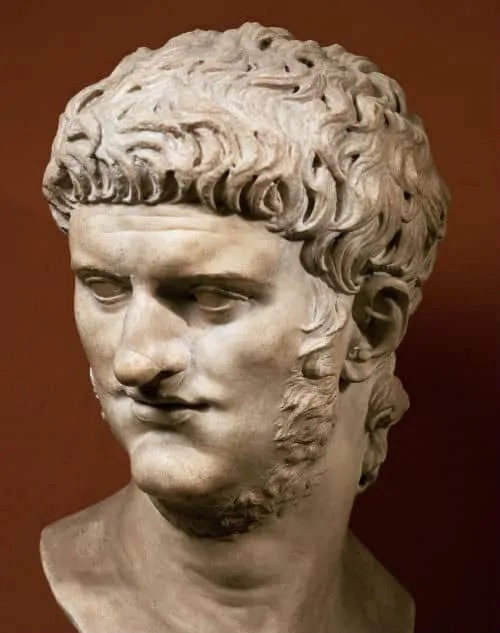
Did you know Emperor Nero had ties to Pompeii? He is believed to have had a vacation home there, as his second wife, Poppaea Sabina, was a Pompeii native.
Poppaea was ambitious and cunning—she first married Nero’s friend Otho to get closer to him. Eventually, she became his mistress, then Empress of Rome, securing her place in history.
Visual Story: 13 must-know tips before visiting Pompeii
7. Inhabitants of Pompeii indulged in graffiti
A fun fact about Pompeii is that ancient graffiti still covers its walls, especially in taverns and public buildings. The Romans loved leaving messages, from love notes to witty remarks. Some of the translated graffiti include:
- “Love guides my hand; I’d rather die than live without you.”
- “Be my support in old age—yes, I have money!”
- “Wall, I’m surprised you haven’t crumbled under all this scribbling.”
- “Myrtis, you’re really good at what you do.” (Found in a brothel)
These writings show that Romans weren’t so different from us—they loved expressing their thoughts in public places!
8. Citizens of Pompeii were religious
Before the Romans took over Pompeii, it was a Greek outpost.
The city of Pompeii has remains of ancient Greek temples, which proves that its people were religious.
The Temple of Apollo, which is still intact, is considered the most important religious temple of the city.
Must read
- Heard of the masturbating man of Pompeii?
- Interesting trivia about Pompeii ruins
9. People of Pompeii had ignored initial warnings
When Mount Vesuvius erupted, it gave almost no chance for escape. But warning signs had been there for years.
In 63 AD, a massive earthquake shook Pompeii, a clear sign of volcanic activity. However, the residents ignored the danger and focused on rebuilding their city instead of relocating.
Then, 16 years later, when Vesuvius erupted in 79 AD, Pompeii was thriving once again—only to be completely buried under ash and pumice, sealing its fate forever.
10. No attempt was made to rebuild Pompeii
After most natural disasters, cities are rebuilt—but not Pompeii. Once buried under 14 to 17 feet of ash and pumice, no one dared to return. The destruction was so massive that survivors simply abandoned it.
However, looters wasted no time. As soon as Mount Vesuvius calmed, they dug tunnels to steal valuables from the ruins. Even neighboring cities like Herculaneum were left deserted.
Today, both sites are famous archaeological wonders, and combined tours of Pompeii and Herculaneum are a popular choice for visitors exploring ancient Roman history.
11. Amphitheatre of Pompeii is the oldest stone building ever
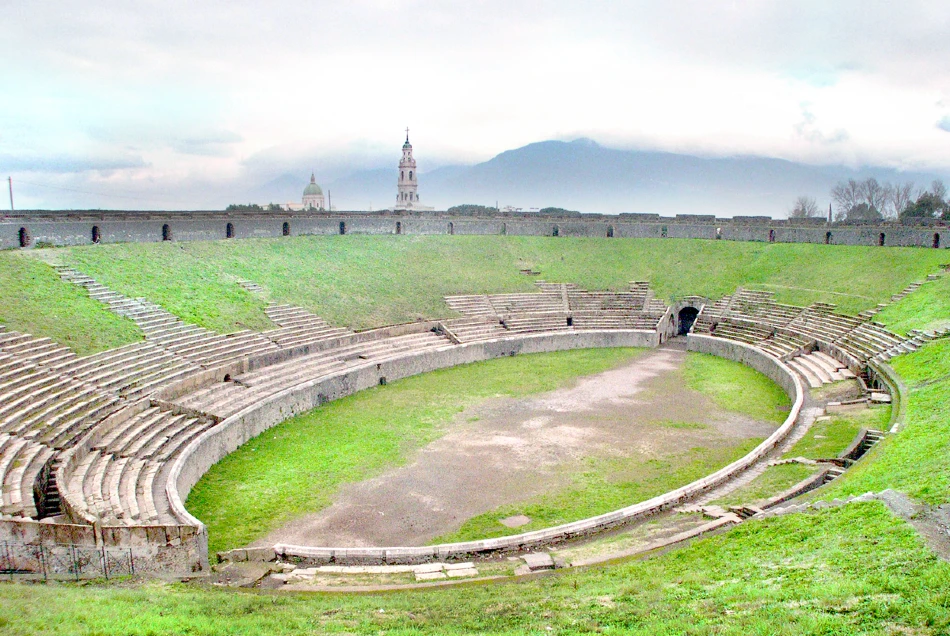
The Amphitheatre of Pompeii dates back to 70 BC. It is the oldest surviving Roman amphitheater.
It is the oldest stone building of its kind known to man.
The next Roman amphitheater built from stone is the Colosseum in Rome, made a century later.
12. Pompeii was popular for its spicy fish sauce called Garum
Pompeii was famous in the Roman Empire for producing and exporting the finest spicy fish sauce called ‘Garum.’
The quality of Garum ranged from very costly to cheap – something like wine.
A good bottle of Garum could be obtained in Pompeii for today’s worth of $500.
Interestingly, the fish bones found in a Garum factory in Pompeii led to a more precise dating of the eruption of Mount Vesuvius.
13. Pompeii’s discovery helped revive art
Discovery of Pompeii led to the revival of Neo-Classicism in the 18th Century.
The Pompeii ruins became a major inspiration for the wealthy and fashionable Europeans.
They exhibited the life of Pompeii in their art and through reproductions of its artifacts.
Some rich families went as far as to build Etruscan rooms inspired by those in Pompeii villas.
14. Erotic art from Pompeii was locked up for 100+ years
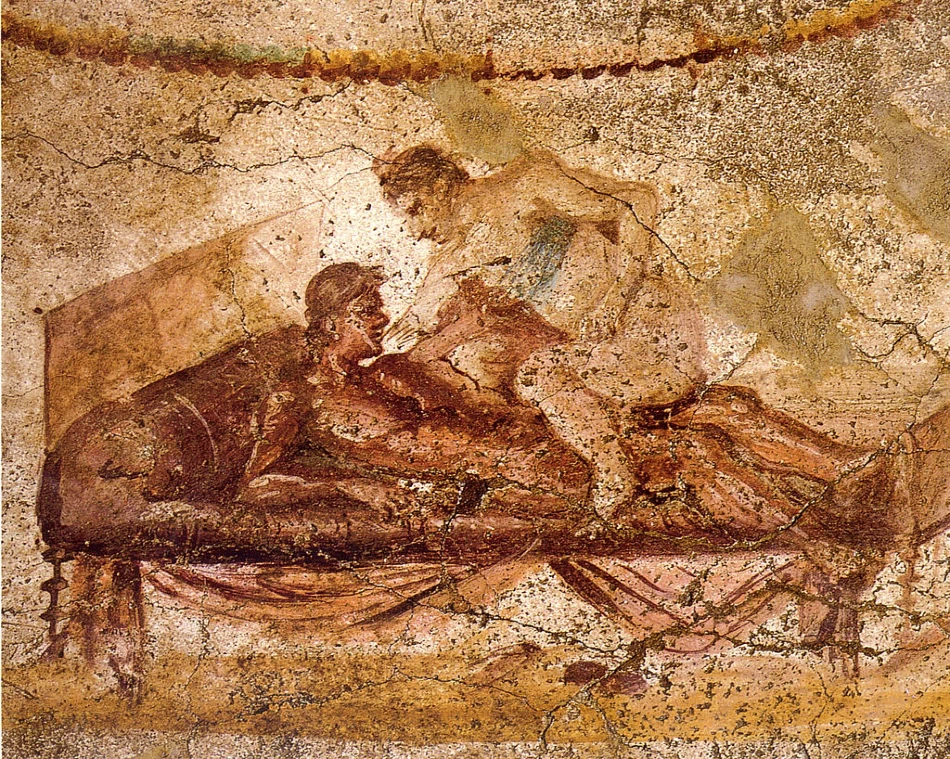
In 1819, King Francis I of Naples was shocked by Pompeii’s erotic artwork and ordered it locked away in a “Secret Cabinet” for mature audiences only.
Now housed in the Secret Museum in Naples, the collection was opened and closed multiple times until 2000, when it was permanently reopened. Minors still need a guardian or written permission to enter.
15. Pink Floyd recorded a live concert at the amphitheater
In 1971, popular rockstar Pink Floyd and his band recorded a live concert at the Roman amphitheater of Pompeii.
This was for a concert Documentary film, ‘Pink Floyd: Live at Pompeii,’ directed by Adrian Maben.
This live show had no audience besides the crew filming the band.
16. Pompeii is the most well-preserved ruins in the World
In 1748, when the Campania region was dug up, explorers were shocked to find that Pompeii was exactly how it was on that fateful day.
Everything was marvelously preserved, starting from the buildings to the dead bodies that were frozen in the same positions where they had fallen.
Archaeologists even found pickle jars and loaves of bread.
17. Pompeii is the world’s largest archaeological and excavation site
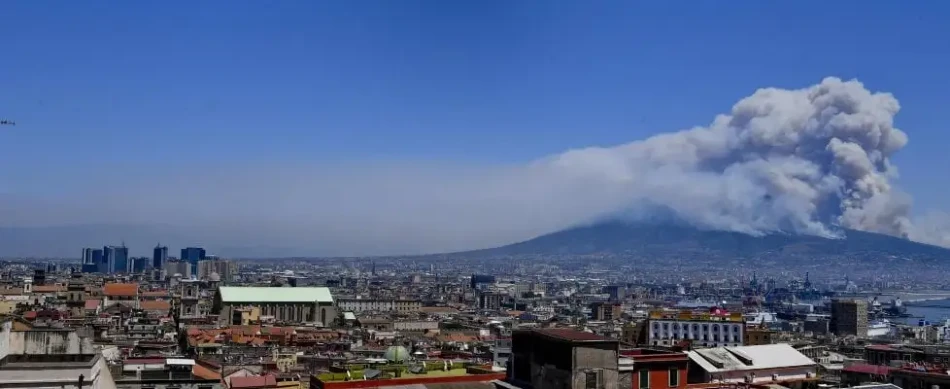
Spanning over 150 acres, Pompeii is the world’s largest archaeological site.
The town of Pompeii was around 10 Km (6.2 Miles) from Mount Vesuvius, but the distance didn’t help.
18. One-third of the city of Pompeii is still to be excavated
Only two-thirds of Pompeii has been excavated, and further digging has been paused.
Professor Pietro Giovanni Guzzo, who oversees the site, believes it’s better to preserve what’s already uncovered rather than expose more ruins to tourists and weather damage.
To ease crowds, the Italian government now encourages visitors to explore nearby ruins like Herculaneum, Stabiae, and Villa Poppaea.
19. Plaster helped get a snapshot of the final moments of Pompeii
In 1863, archaeologist Giuseppe Fiorelli made a shocking discovery—his team found human-shaped voids in the volcanic ash. These empty spaces had formed as bodies decomposed over time.
To preserve them, Fiorelli injected liquid plaster, creating over 1,000 lifelike casts of Pompeii’s victims, frozen in their final moments. These plaster figures, also called “muleteers,” serve as a haunting reminder of the city’s sudden destruction.
Today, archaeologists use transparent glass fiber instead of plaster, allowing visitors to see bones and accessories trapped inside the casts.
20. Pompeii’s ruins may not stay for long
The volcanic ash from Mt Vesuvius had preserved the Pompeii ruins for hundreds of years; however, they were exposed to the elements once they were excavated.
Sadly, without the natural preservative of volcanic ashes, Pompeii’s objects and artifacts have started to decay.
It is estimated that US$335 million is needed to preserve this heritage.
Is this a subtle sign that we need to visit this historic place before it all crumbles to dust? Hopefully not.
21. Mount Vesuvius can go off again
Mount Vesuvius erupted six times in the 18th century and eight times in the 19th century. In the 20th century, it erupted only thrice – in 1906, 1929 and 1944.
This doesn’t mean it won’t go off again. When it comes to a volcano, a lull is always cause for worry.
It is only a question of when and how badly.
22. Vesuvius is the world’s most dangerous volcano
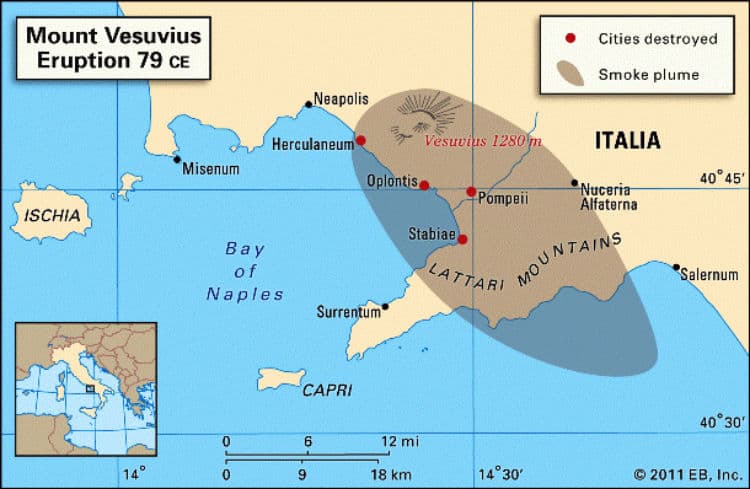
Vesuvius is Europe’s only active volcano. It is also the world’s most dangerous volcano.
Even though it has been silent since 1944, if it goes off again, 3 million people living around the mountain may lose their lives.
Moreover, all those tourists visiting Pompeii and nearby ruins to witness the earlier Vesuvian destruction may also die. It’s a poetic irony.
An 18th-century diarist, Hester Lynch Piozzi, has succinctly put it – “We, who today are spectators, may become spectacles to travelers of a succeeding century.”
23. US Airforce faced the brunt of Mt Vesuvius in 1944
If you have read the novel ‘Catch-22’ by author Joseph Heller, you will remember the US Army Air Force 340th Bombardment Group as unlucky.
The author had joined the 340th Bombardment Group as a B-25 bombardier in May 1944 and wrote the book based on his experiences.
Just a few months before Joseph Heller joined them – that is, in the early months of 1944 (when WW2 was still on), the unit was exposed to the fury of Vesuvius.
The 340th Bombardment Group was stationed a few kilometers from the base of Mount Vesuvius – at Pompeii airfield.
Initially, the soldiers thought they could manage the volcano’s onslaught by wearing their leather jackets and metal helmets. After a while, better sense prevailed, and they evacuated the field.
However, they had to leave their 88 B-25 Mitchell planes – 25 million dollars worth of aircraft—behind. When they came back, the planes were destroyed and useless.
24. Pompeii attracts 4 Million tourists every year
Pompeii has been a popular Italian tourist spot for the past 250 years. More than 4 million tourists buy tickets for the Pompeii ruins every year.
It is believed that with so many tourists, the ruins of Pompeii are being affected.
Some parts of the Pompeii ruins collapsed – like the 2,000-year-old “House of the Gladiators” in 2010.
These Pompeii and Mount Vesuvius facts are certainly mind-blowing! We hope they spiked your curiosity.
When you visit Pompeii, check out how many of these facts hold. If possible, try digging some of your own.

“Vesuvius is Europe’s only active volcano’? Where exactly do you think Etna is?????